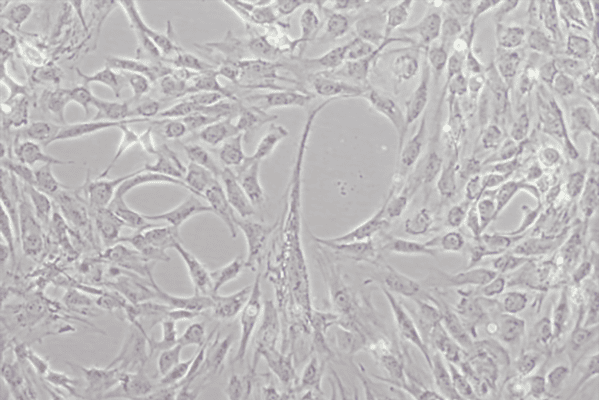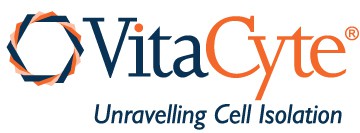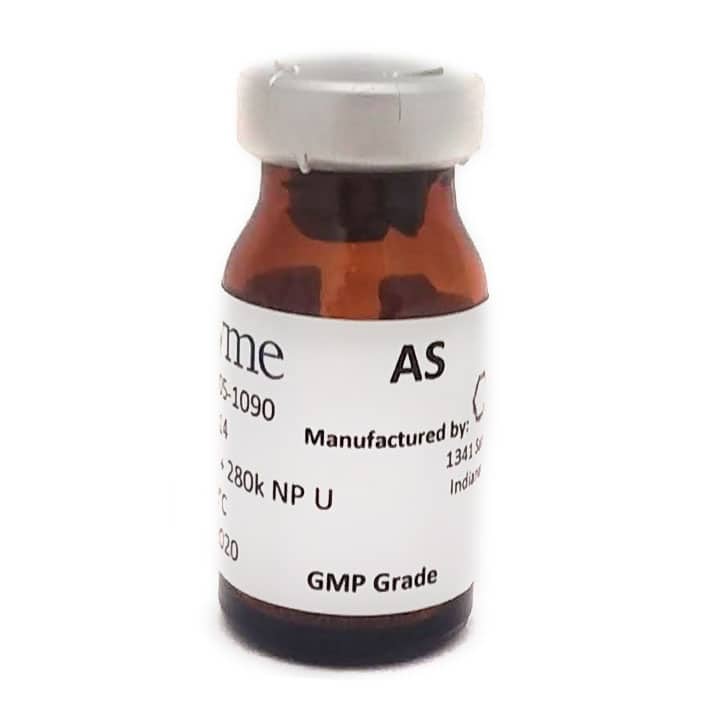Human Adipose SVF ApplicationsRecommended Product
Numerous Manual, Semi-Automated, or Automated MethodsRecommended Method
There are many different methods to isolate human adipose stromal vascular fraction (ASVF) cells, ranging from manual methods that use common equipment found in a tissue culture laboratory to semi-automated or automated devices designed to be standalone instruments that are compliant with GTP/GMP cell processing guidelines1,2.
Expected Cell Yield
The expected cell yields are between 100,000 to 1 million cells per g of lipoaspirate, as summarized in a recent review (see Table 1 of the review article for a summary of results from 18 different reports).1 The cell yield is also affected by the method of collection3, the anatomical site of the adipose tissue4, the age of the donor5, and the method of cell counting.
Perspectives
For many years, crude collagenase was used to isolate the human ASVF cells, but as the field evolved, mixtures of purified C. histolyticum collagenase and bacterial neutral protease enzymes have begun to replace these ill-defined products to achieve better control of the cell isolation process. Most of these purified enzyme formulations were based on collagenase and protease enzyme activities similar to those found in Type 1 or Type I or IA crude collagenase. One study evaluated a broader range of enzyme compositions using a standard amount of collagenase per isolation and purified enzyme products with different amounts of protease activity6. The average cell yield from all enzyme mixtures after 1 hour of incubation was 170,000 cells per mL of lipoaspirate. The best results were obtained with Liberase™ Blendzymes 1 or 2 or with Liberase™ HI Purified Enzyme Blend. We estimate that approximately 70 μg of collagenase and 3400 to 3700 of VitaCyte’s neutral protease activity units (NP U) per mL for Blendzymes 1 & 2 were used in these isolations. A similar result was obtained with Liberase HI that contained 70 used μg of collagenase but used a 10 fold lower amount of neutral protease activity per mL (≈350 NPA U/ml) of enzyme solution. These results confirm the design of Blendzyme 1 & 2 products to be similar to Type 1 crude collagenase.

Both products have similar amounts of collagenase and neutral protease activity but differ in the source of protease activity: Blendzyme 1 is supplemented with Dispase™ whereas Blendzyme 2 is supplemented with thermolysin. These products are no longer manufactured but results from this experiment provide insight into the range of enzyme compositions used to isolate the human ASVF cell population. The data from the study using Liberase HI indicates that lower amounts of neutral protease activity (NPA) can be used without sacrificing cell yield.
Mechanical devices without enzymes have also been used to isolate the adipose stromal cell population. However, non-enzymatic methods do not release cells entrapped by the extracellular matrix, most notably endothelial cells, and perivascular cells. The cell yield using solely mechanical methods is lower and the recovered cell populations are different than those recovered after enzymatic digestion.1
Resources & Reviews
There are numerous review articles publishing recommended methods to isolate human stromal vascular cells. Many of these reviews can be found in Methods in Molecular Biology or other publication series that are dedicated to publishing detailed descriptions of methods.7-10 A video of an enzyme mediated human ASVF cell isolation procedure is published in the literature.11
References
- Aronowitz JA, Lockhart RA, Hakakian CS. Mechanical versus enzymatic isolation of stromal vascular fraction cells from adipose tissue. SpringerPlus. 2015;4(1):1.
- Aronowitz JA, Lockhart RA, Hakakian CS, Birnbaum ZE. Adipose Stromal Vascular Fraction Isolation: A Head-to-Head Comparison of 4 Cell Separation Systems #2. Annals of Plastic Surgery 2016; 77(3): 354-62.
- Oedayrajsingh-Varma MJ, van Ham SM, Knippenberg M, et al. Adipose tissue-derived mesenchymal stem cell yield and growth characteristics are affected by the tissue-harvesting procedure. Cytotherapy 2006; 8(2): 166-77.
- Jurgens WJ, Oedayrajsingh-Varma MJ, Helder MN, et al. Effect of tissue-harvesting site on yield of stem cells derived from adipose tissue: implications for cell-based therapies. Cell and tissue research 2008; 332(3): 415-26.
- Dos-Anjos Vilaboa S, Navarro-Palou M, Llull R. Age influence on stromal vascular fraction cell yield obtained from human lipoaspirates. Cytotherapy 2014; 16(8): 1092-7.
- Pilgaard L, Lund P, Rasmussen JG, Fink T, Zachar V. Comparative analysis of highly defined proteases for the isolation of adipose tissue-derived stem cells. Regenerative medicine 2008; 3: 705-15.
- Buehrer BM, Cheatham B. Isolation and characterization of human adipose-derived stem cells for use in tissue engineering. Methods in molecular biology (Clifton, NJ) 2013; 1001: 1-11.
- Mailey B, Hosseini A, Baker J, et al. Adipose-derived stem cells: methods for isolation and applications for clinical use. Methods in molecular biology (Clifton, NJ) 2014; 1210: 161-81.
- Qureshi AT, Chen C, Shah F, Thomas-Porch C, Gimble JM, Hayes DJ. Human adipose-derived stromal/stem cell isolation, culture, and osteogenic differentiation. Methods in enzymology 2014; 538: 67-88.
- Mahmoudifar N, Doran PM. Mesenchymal Stem Cells Derived from Human Adipose Tissue. Methods in molecular biology (Clifton, NJ) 2015; 1340: 53-64.
- Zhu M, Heydarkhan-Hagvall S, Hedrick M, Benhaim P, Zuk P. Manual isolation of adipose-derived stem cells from human lipoaspirates. Journal of visualized experiments : JoVE 2013; (79): e50585.

